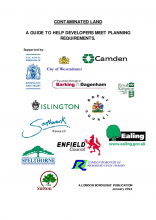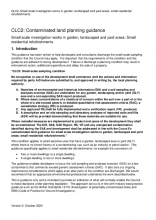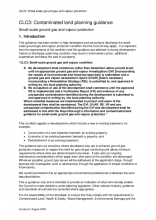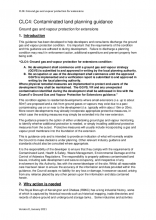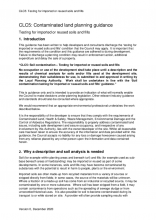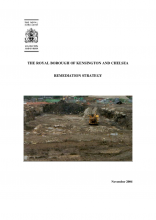Land contamination
On this page
Land contamination
Contaminated land is land that has become polluted as a result of a present or previous industrial activity. Contaminated material can affect the underlying ground or water within the ground and could harm people, building materials, water courses or nature. For information on how land contamination could affect you as a resident see frequently asked questions.
Enquiries about land contamination
If you would like to find out whether a particular property had a former land use that may potentially have caused some soil contamination you can request a report from the Pollution Regulatory Team. We also maintain four public registers that hold other information that may be relevant to your enquiry. Find out more about the contaminated land enquiry system.
Dealing with contaminated land
Sites under planning application
If a site is to be developed as part of a planning application it is dealt with under the Town and Country Planning Act, and it is the developer's responsibility to make sure the land is suitable for its proposed use. The owners and/or developers of the site must establish the extent and nature of any potentially harmful materials on the site. This should normally be done before the formal planning permission is granted for the development. However, if this is not possible, permission can be granted, but certain conditions will be attached to the permission, which must be met.
If potential risks are identified, the land will need to be dealt with before development begins, to minimise all risks posed. This process is known as remediation.
Guidelines were produced in 2004 to help developers meet the planning requirements for a potentially contaminated site. It was prepared by the Royal Borough in collaboration with twelve other London boroughs and the Environment Agency, and sets out the information that a Local Planning Authority will require. Although some references and guidance have since been superseded, the basis of this publication is still applicable but the Council is now in the process of providing more in depth, condition specific guidance. Subject to the development and the former use of the site, any one of five conditions could be attached to the development, the scenarios covered by the conditions are listed below. As this guidance is developed, over the next six months, it will appear below:
- Condition CLC1: Main contaminated land condition (4 parts – Preliminary risk assessment and proposed site investigation, quantitative risk assessment and remediation strategy, verification report and unexpected contamination); in development
- Condition CLC2: Small scale sampling in garden, landscaped and yard areas (small residential refurbishments)
- Condition CLC3: Small-scale ground gas and vapour protection for small developments including basements
- Condition CLC4: Ground gas and vapour protection for extensions
- Condition CLC5: Soil Contamination – Testing for imported or reused soils and fills
Sites in current use
Local authorities are responsible for identifying sites that are not subject to a planning application but may be potentially contaminated and unsuitable for their current use. If the local authority has identified that a site had a former land use that could have potentially caused contamination they will investigate further to decide if the sites presents a risk to human health or the environment. This is known as an investigation through Part IIA of the Environmental Protection Act 1990.
Remediation
Once contaminated land has been correctly identified (see detecting contamination), the risk needs to be dealt with, and a programme of appropriate remediation must be undertaken. This means that any work undertaken should result in the land being ‘suitable for use’ so it no longer poses a significant risk - bearing in mind its current or proposed use.
It also means that the effects of any significant harm, or water pollution that has occurred, have been remedied. In many situations the level of contamination is reduced to the point at which no significant risk remains. This does not necessarily mean that all traces of contamination are removed, and in some situations the contamination will be left where it is but permanently contained, so that it is prevented from doing any further harm.
The Council has produced a Remediation Strategy, making it easier for residents and businesses to understand what the process of remediation might entail. It sets out the steps that will need to be taken to reduce and ultimately minimise the risks posed, once a site has been designated as ‘contaminated’.
On-site remediation is not likely to affect residents. If a site investigation has been undertaken and remediation is required, then you may find out further details by contacting the Planningline on 020 7361 3012 and asking to view the relevant report. Some of these may already be available on the planning pages.
Last updated: 6 January 2021

